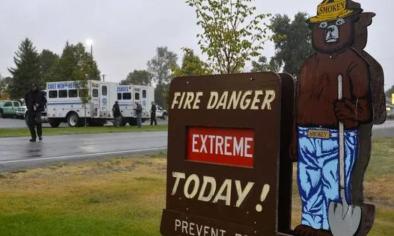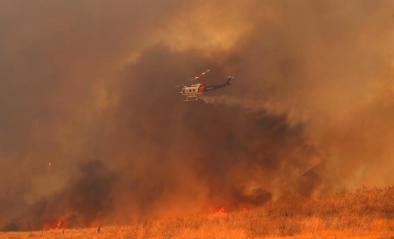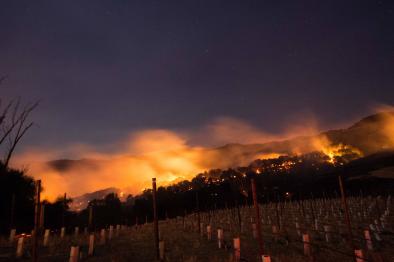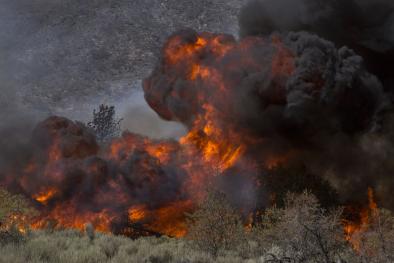Why Forest Fires Are Blazing
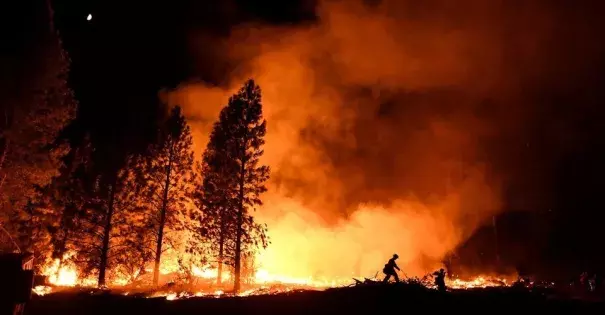
More than two dozen named fires currently burn across Washington and Oregon. More than one million acres have burned in Montana, an area larger than Rhode Island, in the Treasure State’s third-worst fire season on record. And the largest brushfire in the history of Los Angelescurrently threatens hundreds of homes in Burbank.
Canada may be experiencing an even worse year for wildfires: 2.86 million acres have burned in British Columbia, the largest area ever recorded in the province.
So what happened? How did a wet Western winter lead to a sky-choking summer?
The answer lies in the summer’s record-breaking heat, say wildfire experts. Days of near-100-degree-Fahrenheit temperatures cooked the Mountain West in early July, and a scorching heat wave lingered over the Pacific Northwest in early August.
“This will become an important year for [anecdotes about] the importance of temperature. Despite the fact that these forests were really soaked down this winter and spring, these heat waves have dried things out enough to promote really large fires,” says Park Williams, a research scientist at the Lamont-Doherty Earth Observatory at Columbia University.
In other words, the weeks of heat that baked the West in July and August were enough to wipe away some of the fire-dampening effect of the winter storms.
“The last 60 to 90 days have been exceptionally warm and dry, the perfect recipe for drying out fuels (the one ingredient besides ignitions you need for fire in these systems),” said John Abatzoglou, a professor of geography at the University of Idaho, in an email. “I was running a few numbers this morning, and the last 60 days have been record warm from Spokane, Washington, to Medford, Oregon; both Seattle and Missoula earlier this summer set records for the longest number of days without measurable rain.”
This excessive heat can have an outsize effect on the size of forest fires. For more than three decades, wildfire researchers have known that fire and aridity, which is controlled by heat, exist in an exponential relationship. Every degree of warming does more to promote fire than the previous degree of warming, Williams said.
“Now, thinking about temperature trends due to human-caused climate change, we think that the western United States is 1.5 [degrees] Celsius, or 3 degrees Fahrenheit, hotter than it would be in absence of climate change. And there’s a heat wave on top of that,” said Williams. “Because of the exponential influence of temperature, that means that this heat wave is having a way worse influence on fire than it would in absence of human-caused warming.”
In the runaway consequences of each additional degree of warming, wildfires are a “canary in the coal mine” for the effects of climate change, Williams said.
And global warming is already having an effect on wildfire. In a paper published last year in the Proceedings of the National Academy of Sciences, Williams and Abatzoglou found that the total area burned in the western United States over the past 33 years was double the size it would have been without any human-caused warming.
“The added forest fire area—due to just the degree and a half Celsius of warming—equaled the area of Massachusetts and Connecticut combined,” Williams told me.
Other researchers have arrived at similar conclusions. A paper published in Science last year found that “large wildfire activity increased suddenly and markedly in the mid-1980s, with higher large-wildfire frequency, longer wildfire durations, and longer wildfire seasons.” The mid-1980s is also when most scientists argue that the effects of global warming began to be broadly felt.
The same team of researchers also found that the area of annual burned forest in the Pacific Northwest has increased by nearly 5,000 percent since the early 1970s.
Related Content
